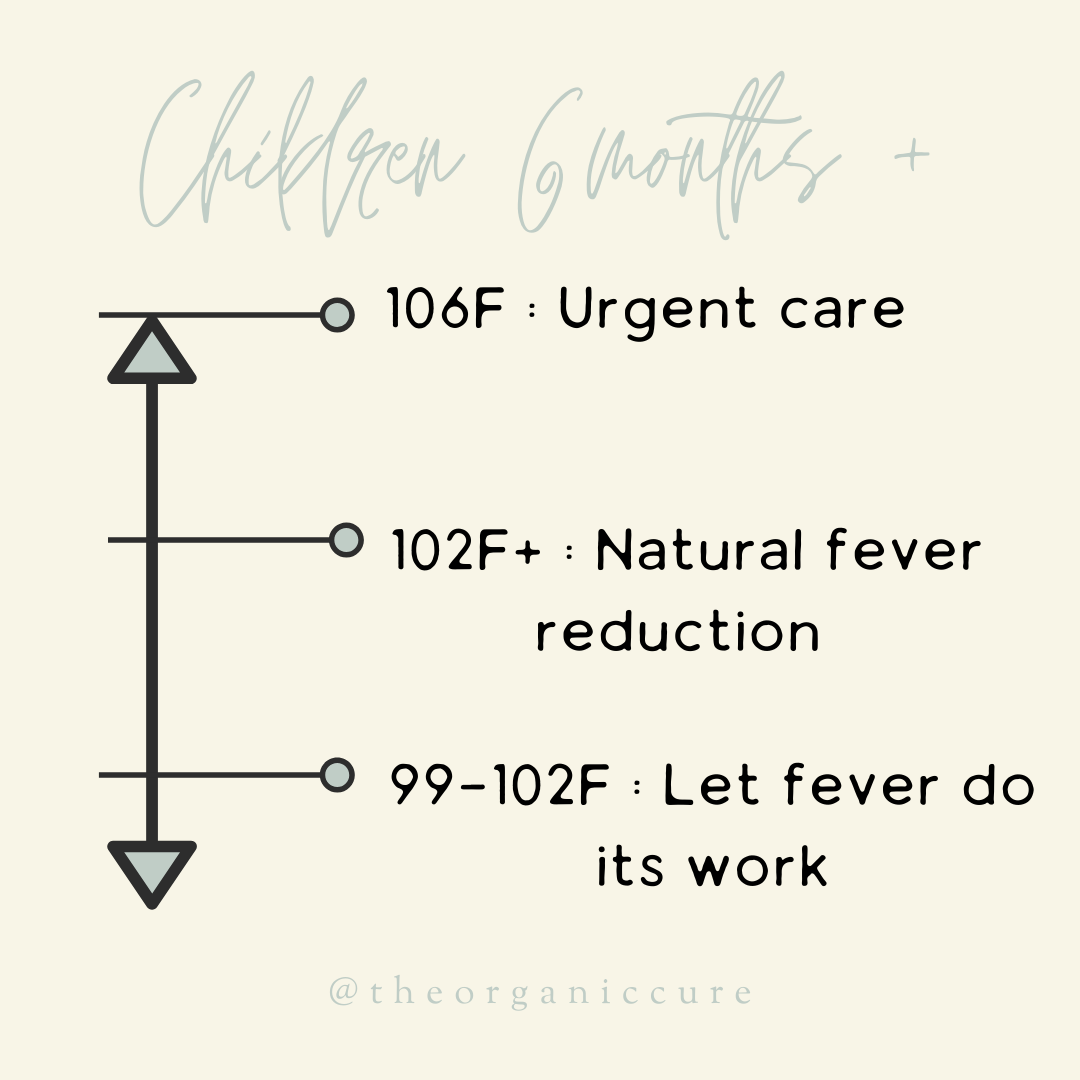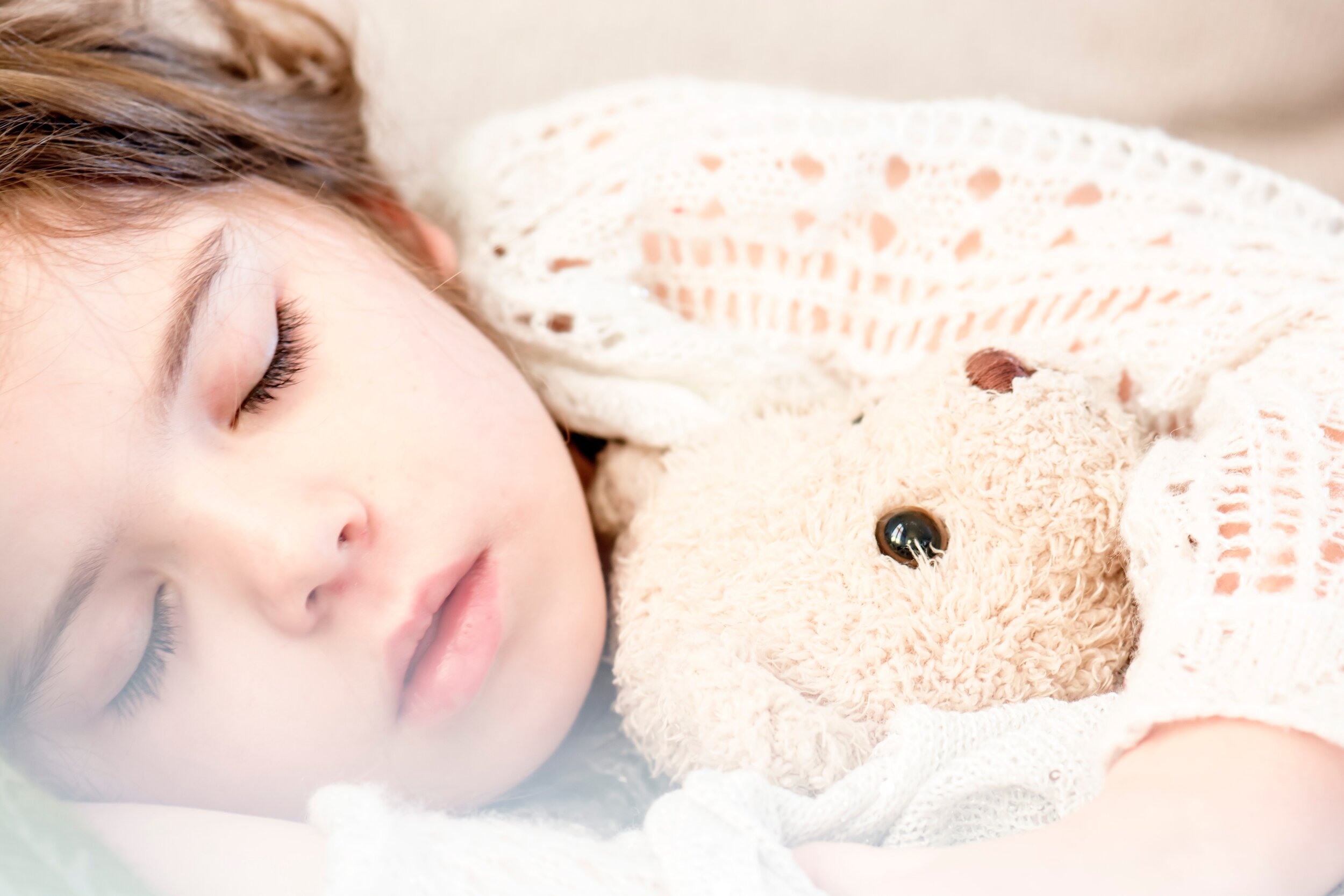Fever is not something to fear. It’s a positive sign that the body is responding to an invader. When a child has a fever, it’s a sign their immune system is learning. We want to avoid suppressing this process, or the long-term effects for your child’s health could be far worse. Most of the time we should let a fever run it’s course, and even encourage it. Rarely does a fever get high enough that we need to suppress it.
My child gets a fever too often
Children get a fever more often because their immune system has a lot to learn. Each time the body is exposed to a new pathogen, the immune system activates a cascade of events that recruits immune cells to the area in need – and this process generates heat.
Is my baby’s fever too high?
Fever Guidelines
The natural limit of a fever is higher than you might think… 106℉. If a fever reaches this level: go to Emergency Department immediately, and it would be appropriate to give a dose of fever reducer such as infant or children’s motrin.

Infant fever: when to call your doctor
Even if a fever is low, it can be a concern if you have an infant. You should contact your doctor if your child’s fever reaches these marks:
- Under 2 months old: 99.5℉
- 3-6 months: 102℉
- 6-12 months: 104.5℉
Your doctor can help you rule out signs of a serious bacterial infection and determine whether you need to seek urgent care or use fever suppression.

What causes high fever in children?
If a fever is approaching 106℉, there could be a serious bacterial infection. These need to be treated with antibiotics. The most common causes of a fever this high in children are:
- Pneumonia
- Meningitis
- Urinary tract infection
Signs of a Serious Bacterial Infection:
- Changes in behavior (crying, inconsolable, lethargic, moaning)
- Respiratory (crackles, decreased breath sounds, blue lips, rapid breathing, difficulty breathing, cold extremities)
- Stiffened neck – a sign of meningitis
- Seizures
- Fainting or lightheadedness
- Rash
Reduce fever naturally
If a fever surpasses 102℉ I encourage my patients to start using natural fever reducing techniques.
- Fluids (should be encouraged anyway)
- Cold compress
- Peppermint oil down spine
- Light clothing
- Sponge bath
As mentioned above, if a fever approaches 106℉ this is too high and you should take your child for urgent attention. I tell my patients to err on the side of caution – if the fever is continuously climbing and reaches 105℉ don’t wait for 106℉, just head to the urgent care now.
When to let a fever go
From 99℉ to 102℉ it’s generally considered safe to let the fever run its course without interference. I tell my patients that, depending on the age of their child, it may even be appropriate to encourage the fever:
- Take warm baths
- Wear warm clothing
- Cover up with a blanket
- Drink warm water with lemon, or herbal tea
Fever reducers: what to use, what not to use
For my patients, I give them personal recommendations for what to try before going the pharmaceutical route. I typically start with a homeopathic remedy because they are gentle and don’t cause adverse effects. Some of my favorites for fever are:
- Ferrum Phosphoricum
- Aconite
- Belladonna
I once had a 6 month old come in with a fever that refused to go away for 7 days, and was stuck around 101-102℉. I gave him one pellet of Ferrum phos at the beginning of the visit, and by the time he left it was down to 98℉. Homeopathy works, people.
That said, there are times when a natural remedy doesn’t reduce a fever, and we need to go the chemical route (if you’ve heard me talk about the therapeutic order, you know I’m not opposed to this if we’ve worked our way up the pyramid).
In this case, I recommend Motrin over Tylenol. Reason being, Tylenol is well-known to deplete glutathione. If this is the first time you’re hearing about this, your doctor has been holding out on you. The research has been widely available for several years, and is accepted by the broader medical community. Unfortunately, many doctors do not keep themselves informed and continue to subscribe to the belief of the 90’s, that Tylenol was the “gentle” drug for kids. This is dangerous thinking that has contributed to many other health conditions which I will not get into here.
Glutathione is the master antioxidant in the body. It is essential to helping fight disease and reducing oxidative damage. When we don’t have enough of it, we see increased illness, chronic disease, and neurological issues, to name a few. There are studies linking glutathione deficiency to ADHD in children. Yes – your child’s behavioral issues may have been caused by the Tylenol your doctor advised you to take during pregnancy.
Moral of the story – if you have to use a chemical fever reducer, use Motrin. Be aware that, while Tylenol damages the liver, Motrin damages the stomach lining, so avoid using more than necessary.
Natural Electrolytes: Better than Pedialyte
When you’re encouraging fluids, you can get more bang for the buck with this home made elecrolyte formula. Electrolytes are important during fever because the cells are working so hard that they use up our supply of micronutrients like calcium, magnesium, and potassium. Keep your little one from dehydrating by offering them this refreshing, naturally sweet blend that is loaded with healing micronutrients and doesn’t come with unnecessary food dyes and preservatives.
- 3 cups natural spring water
- ⅓ cup freshly squeezed lemon juice
- 1 cup fresh watermelon juice
- ⅓ cup raw honey* or molasses
- Pinch of natural sea salt
- ½ to 1 tsp aluminum free baking soda
*honey is not safe for children under one year of age. This recipe is complements of @healingwithouthurting
References
Prenatal Exposure to Acetaminophen and Risk of ADHD | Eivind Ystrom, Kristin Gustavson, Ragnhild Eek Brandlistuen, Gun Peggy Knudsen, Per Magnus, Ezra Susser, George Davey Smith, Camilla Stoltenberg, Pål Surén, Siri E. Håberg, Mady Hornig, W. Ian Lipkin, Hedvig Nordeng, Ted Reichborn-Kjennerud. Pediatrics Nov 2017, 140 (5) e20163840; DOI: 10.1542/peds.2016-3840




[…] is used to treat a wide variety of ailments – from fevers to teething pain to colic. This herb lowers the stress hormone, cortisol, and therefore works to […]